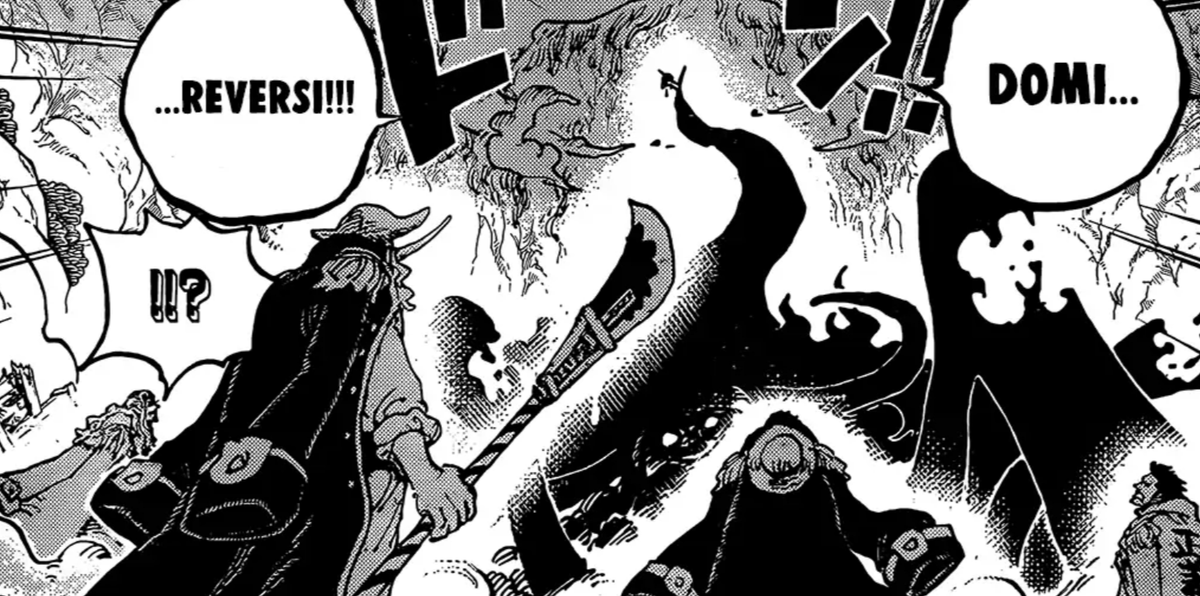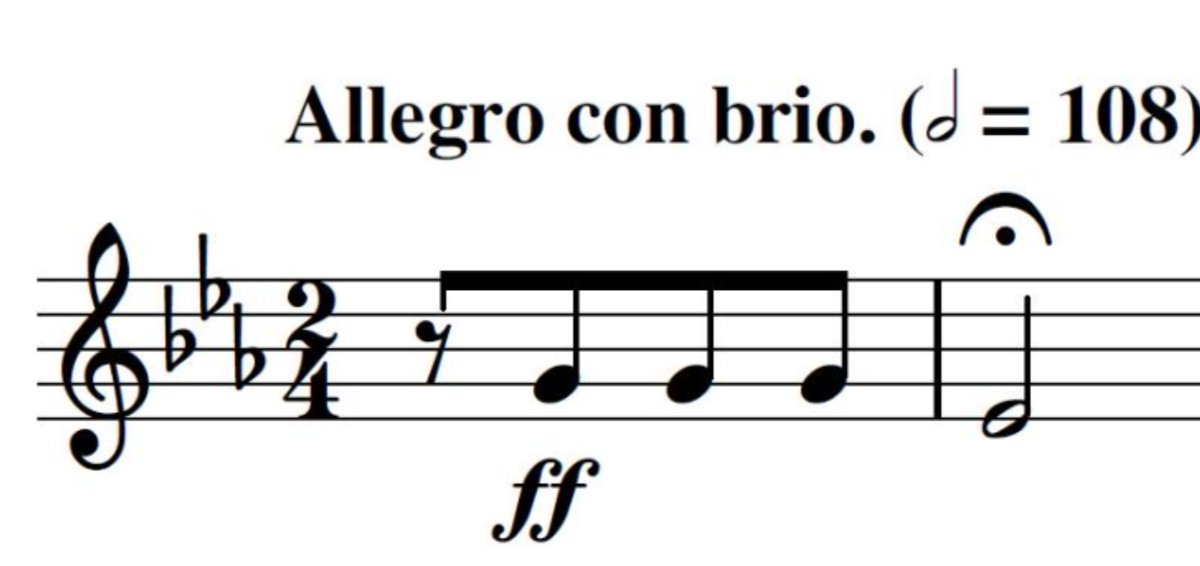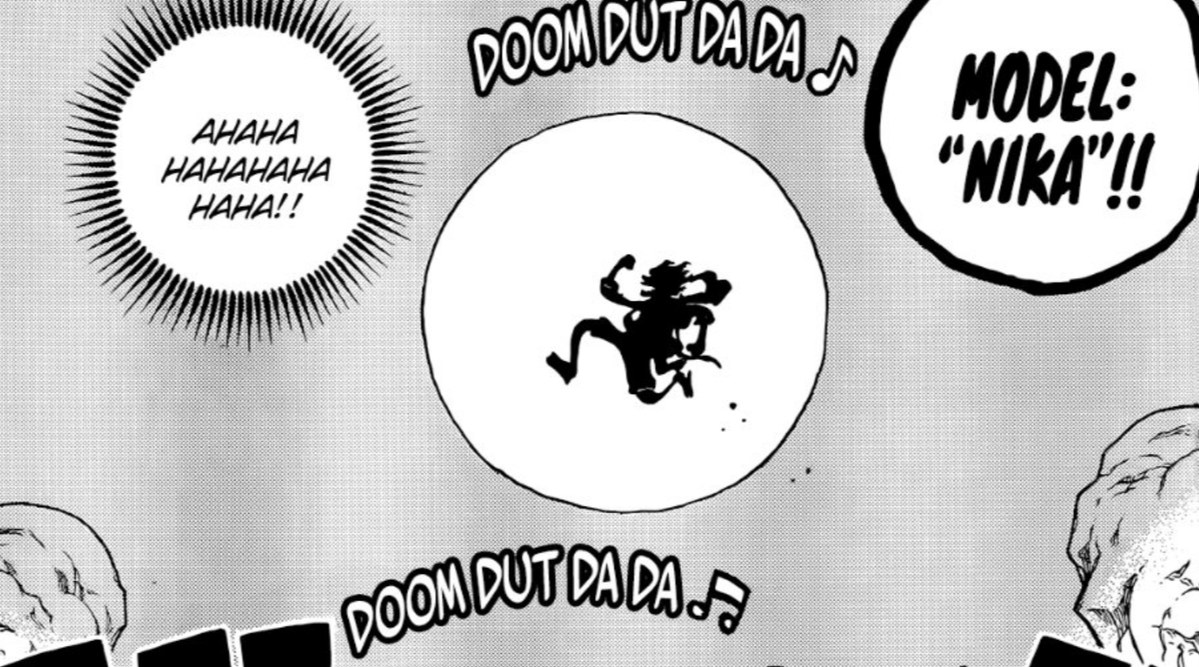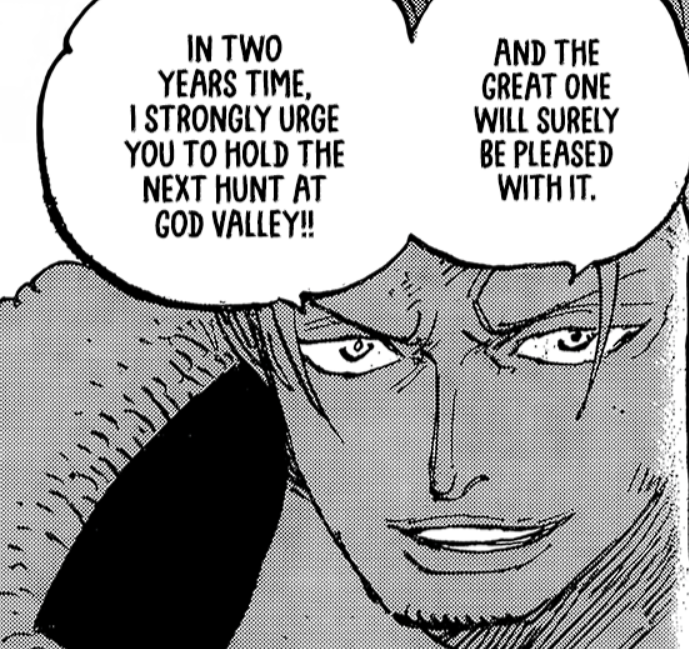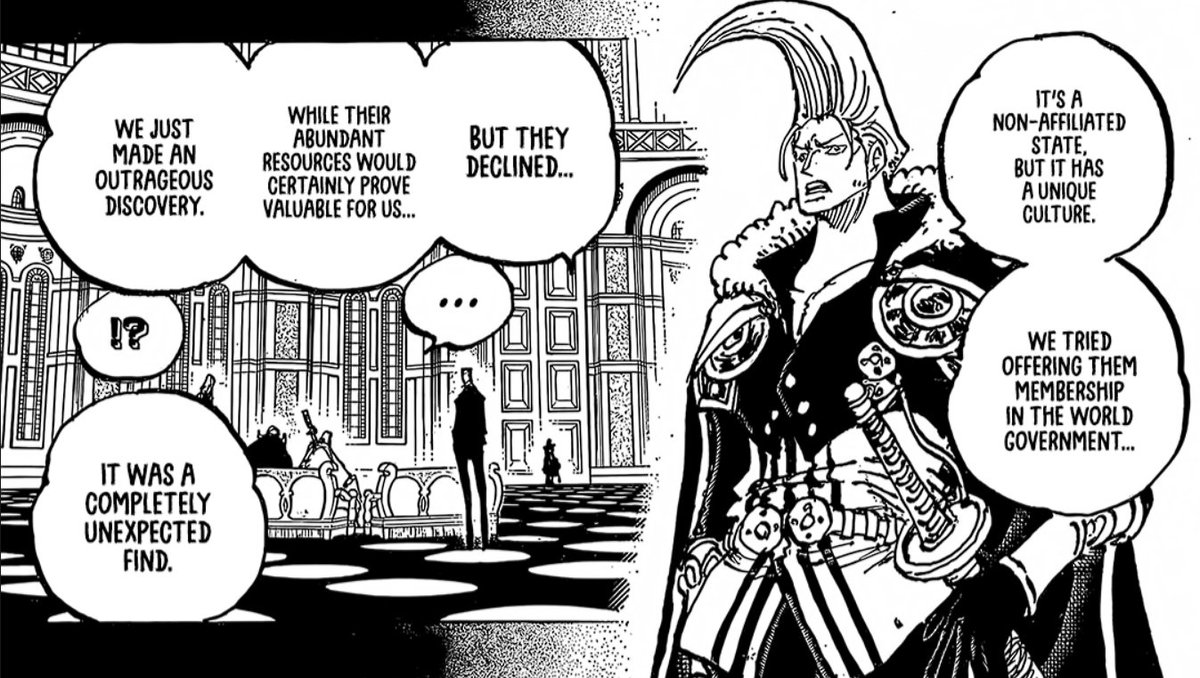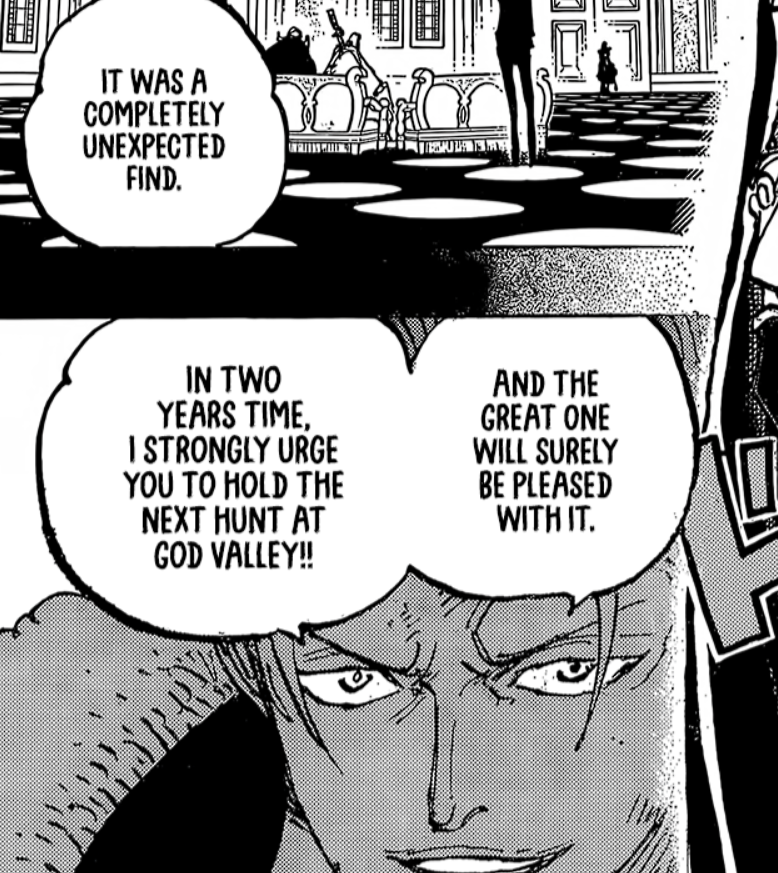The first two characters mentioned in Zoro's direct lineage are his grandparents. Roronoa Pinzoro & Shimotsuki Furiko. Ushimaru's older sister.
Pinzoro / ピンぞろ means, 'Snake Eyes.' A gambling term.
Furiko / 振り子 means, 'Pendulum'. A weighted device used to help track time.



Pinzoro / ピンぞろ means, 'Snake Eyes.' A gambling term.
Furiko / 振り子 means, 'Pendulum'. A weighted device used to help track time.
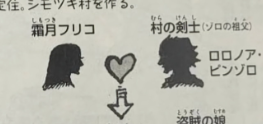



The choice of names seems to be the most interesting thing here. Both of these names repeat themes we have scene through other characters.
Gambling is associated with Fujitora & Rayleigh.
Time is associate with Lady Toki. Also, pendulums also work by influence of gravity...🤔



Gambling is associated with Fujitora & Rayleigh.
Time is associate with Lady Toki. Also, pendulums also work by influence of gravity...🤔




Both Amatsuki Toki & Shimotsuki Furiko are women of Wano associated with the concept of time. This seems like it may be of importance.
The thematic connections to Fujitora are also interesting, almost suspicious.
Are Fujitora & Pinzoro / 'Snake Eyes' connected? If so, how?



The thematic connections to Fujitora are also interesting, almost suspicious.
Are Fujitora & Pinzoro / 'Snake Eyes' connected? If so, how?




Their son, Roronoa Arashi married Tera, the daughter of a criminal.
As people such as @StrawhatUFO have pointed out.
Arashi / あらし means, 'Storm'. & Tera / てら, 寺 means, 'Buddhist Temple'.
The word Tera could also be interpreted to the Latin meaning, 'Earth.'
As people such as @StrawhatUFO have pointed out.
Arashi / あらし means, 'Storm'. & Tera / てら, 寺 means, 'Buddhist Temple'.
The word Tera could also be interpreted to the Latin meaning, 'Earth.'

The concept of storms are very significant in the One Piece story. The idea of a coming storm is often associated with the D. Clan.
It is said that "The D. Will always cause another storm."
This theme is also embodied by Dragon, who is literally D. Who can summon storms.


It is said that "The D. Will always cause another storm."
This theme is also embodied by Dragon, who is literally D. Who can summon storms.



The concept of the storm essentially represents the fact that the D. Clan are the sworn enemies of the Celestial Dragons 'The Gods' & that they will bring another war that threatens the rule of the Celestials. 





For Zoro's father to be given a name that literally means storm seem quite significant.
It is likely that his character was associated with fighting the World Government. Arashi did die in a battle with pirates.
We also know from Zoro's flashback in Wano that they were pirates


It is likely that his character was associated with fighting the World Government. Arashi did die in a battle with pirates.
We also know from Zoro's flashback in Wano that they were pirates



This leads us to considering Zoro's mother, Tera. The daughter of a criminal.
Before I get to that, as a side note. Zoro's father being killed by pirates may also explain his motivation to become a pirate hunter.
It might even be that Mihawk was the pirate who killed Arashi.



Before I get to that, as a side note. Zoro's father being killed by pirates may also explain his motivation to become a pirate hunter.
It might even be that Mihawk was the pirate who killed Arashi.




Now let's discuss Zoro's mother, Tera.
The association with Buddhism connects closely to the morals that Zoro follows.
The Bushido code originated from Zen-Buddhism, Shintoism & Confucianism.


The association with Buddhism connects closely to the morals that Zoro follows.
The Bushido code originated from Zen-Buddhism, Shintoism & Confucianism.



The alternative interpretation of Tera to the Latin language also makes an interesting connection.
In Latin, Tera means, 'Earth'. This connects us to the concept of 'Varse'. The Skypiea word for soil that they considered to be holy
Zoro was the one that Gan Fall explain this to
In Latin, Tera means, 'Earth'. This connects us to the concept of 'Varse'. The Skypiea word for soil that they considered to be holy
Zoro was the one that Gan Fall explain this to

I think that both of these interpretations are valid & that perhaps they should be considered together, as appreciation of nature is also a principle with significance in Buddhism traditions.
Zoro has these values and is associated with these themes because of his mother.

Zoro has these values and is associated with these themes because of his mother.


This association with nature even comes down to Zoro's nickname, 'Moss Head.'
Zoro also recently fought King, who had a tattoo of a blossoming plant.
This connects back to the Skypieans & the fact that the Lunarians were the ones who created the Room of Flowers in Mariejois.


Zoro also recently fought King, who had a tattoo of a blossoming plant.
This connects back to the Skypieans & the fact that the Lunarians were the ones who created the Room of Flowers in Mariejois.



Lastly. Zoro's mother is also described as 'the daughter of a criminal.' This description is vague and seems to tell us nothing but there are some things we may be able to infer.
The term 'criminal' instead of 'pirate' may imply a Revolutionaries connection.
The term 'criminal' instead of 'pirate' may imply a Revolutionaries connection.

This may seem like a huge reach but it would actually explain why and how the Shimotsuki became allies of the Revolutionary Army.
We saw back in chapter 589 that Koushirou gave Dragon supplies & the Shimotsuki two-sword flag appears in chapter 1054 at the parade honouring Sabo.



We saw back in chapter 589 that Koushirou gave Dragon supplies & the Shimotsuki two-sword flag appears in chapter 1054 at the parade honouring Sabo.




Overall, Zoro's family are closely associated with some of the most significant themes in the One Piece story. Time, 'the storm' / revolution & the value of earth. & perhaps even the D. Clan.
This family may have history with characters such as Dragon, Mihawk & Fujitora.



This family may have history with characters such as Dragon, Mihawk & Fujitora.




Most curious of all is that despite now being named, these characters remain silhouetted.
In my view, this tells us that we can still expect to see these characters in the story. Most likely through a flashback.
In my view, this tells us that we can still expect to see these characters in the story. Most likely through a flashback.

Whether or not Zoro's mother, Tera was the daughter of one of the Revolutionaries remains to be seen but this is certain possible.
It is definitely true that the Shimotsuki are allies of the Revolutionary Army. So we will likely see these characters through them.
It is definitely true that the Shimotsuki are allies of the Revolutionary Army. So we will likely see these characters through them.

To conclude. I would not be at all discouraged that this information was revealed in an SBS.
We can almost certainly be sure that the Shimotsuki will play an important part in the story & we can even expect to see these characters properly.
We can almost certainly be sure that the Shimotsuki will play an important part in the story & we can even expect to see these characters properly.
That's all I've got for this one. Soon I will do another thread going in to the extended family & the connections of Kozaburo, Ushimaru, Koushirou & Kuina.
Thanks for reading 🙏
Thanks for reading 🙏
• • •
Missing some Tweet in this thread? You can try to
force a refresh



